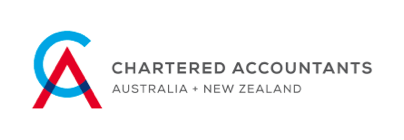What is a cash flow statement?
A cash flow statement is a financial document that provides a summary of a company’s cash as it flows in and and out over a specific period, typically a month, quarter, or year. It is one of the core financial statements used to assess a company’s financial strength, alongside the balance sheet and income statement.
The primary purpose of a cash flow statement is to give stakeholders a clear view of how a business manages its cash, highlighting its ability to generate cash to meet its obligations and fund its operations. Unlike income statements, which include non-cash items, cash flow statements provide a clear, direct picture of a company’s cash situation.
Key Functions of a Cash Flow Statement
A cash flow statement helps with:
Liquidity and Solvency
It measures a company’s ability to pay its short-term obligations and sustain long-term operations, giving insight into financial stability.
Cash Management
It helps businesses plan and manage their cash flow efficiently, ensuring they have enough cash to cover expenses and make strategic investments.
Investment Decisions
For investors and creditors, it serves as a critical tool for assessing the company’s financial health and determining the risk and return on investment.
Cash Flow Statement Components
A cash flow statement is divided into three main sections, each reflecting different types of cash transactions.
1. Operating Activities.
This includes cash generated from or used in the company’s primary business operations, such as cash receipts from sales and cash payments to suppliers and employees.
2. Investing Activities
It encompasses cash flow from the purchase or sale of long-term assets like property, plant, and equipment, as well as investments in securities.
3. Financing Activities
This area covers cash flow related to borrowing and repaying bank loans, issuing and buying back shares, and paying dividends.
Example
Let’s look at a company with an opening cash balance of $40,000.
Step 1: Determining net cash from operating activities
This involves adjusting net income for non-cash items (such as depreciation and amortisation) and changes in working capital components (like receivables, payables, and inventories). The aim is to calculate the cash generated or used by the company’s core business operations.
Example:
Net income of $50,000 + Depreciation of $10,000 – Increase in accounts receivable $10,000 + Increase in accounts payable $5,000 = $50,000 + $10,000 – $10,000 + $5,0000 = $55,000 in net cash provided by operating activities.
Step 2: Identify Cash Flow from Investing Activities
This involves listing all cash spent on purchasing long-term assets and cash received from selling these assets. This section highlights the company’s investment in its future growth and operational capacity.
Example:
Cash paid for equipment $-15,000 + Proceeds from sale of investments $10,000 = -$5,000 net cash used in investing activity.
Step 3: Calculate Net Cash from Financing Activities
Include cash transactions related to the company’s financing activities, such as issuing or buying back equity, borrowing or repaying debt, and paying dividends. This section reflects how the company finances its operations and growth through debt and equity.
Example:
Proceeds from issuing new stock $20,000 – Dividends paid $5,000 = $15,000 in net cash provided by financing activities.
Step 4: Reconcile Opening and Closing Cash Balances
Now, we put everything together. So we sum up the net cash flow from operating, investing, and financing activities to arrive at the total change in cash for the period. Add this to the opening cash balance to find the closing cash balance, which should match the cash amount reported on the balance sheet.
Example:
$50,000 (Operating) + $-5,000 (Investing) + $15,000 (Financing) = $60,000. Starting cash balance $40,000 + Net increase in cash $60,000 = Ending cash balance of $100,000.
Interpreting Cash Flow Statements
Analysing Operating Activities
Positive Cash Flow from Operating Activities
This indicates that the company is generating sufficient cash from its core business operations to sustain its activities and growth. It’s a sign of financial health and operational efficiency.
Negative Cash Flow from Operating Activities
If the company consistently reports negative cash flow from operations, it may indicate issues with profitability or capital management that need to be addressed.
Reviewing Investing Activities
Cash Outflows for Investments
Significant cash spent on purchasing assets suggests that the company is investing in its future growth. However, it’s important to ensure these investments are yielding positive returns over time.
Cash Inflows from Asset Sales
Regular cash inflows from selling assets could indicate the company is divesting underperforming or non-core assets to focus on its key operations or raise cash.
Evaluating Financing Activities
Raising Capital through Debt or Equity
Frequent cash inflows from financing activities may show the company is expanding or refinancing existing debt under favourable terms. It’s essential to assess whether the company can manage and service this debt.
Dividend Payments
Regular dividends can attract investors looking for income. However, excessive dividend payments compared to net income may not be sustainable in the long run.
The Final Balance
The ending cash balance gives a picture of the company’s liquidity position at the end of the period. A healthy ending balance supports operational needs, investments, and debt repayment capabilities.
Let Allen Audit & Advisory Audit Your Cash Flow Statements
Understanding the details of cash flow statements is crucial for businesses aiming to build their financial foundation and drive growth. At Allen Audit & Advisory, we focus on conducting detailed reviews of cash flow statements to identify opportunities for enhancing your business’s financial performance.
We work collaboratively with our clients, building a deep understanding of your business operations. Leveraging our extensive experience across a diverse range of industries, we are adept at suggesting and implementing effective strategies for financial improvement.
If you’re seeking expert analysis and advice to improve your overall financial health, contact us for a thorough and insightful audit review.








